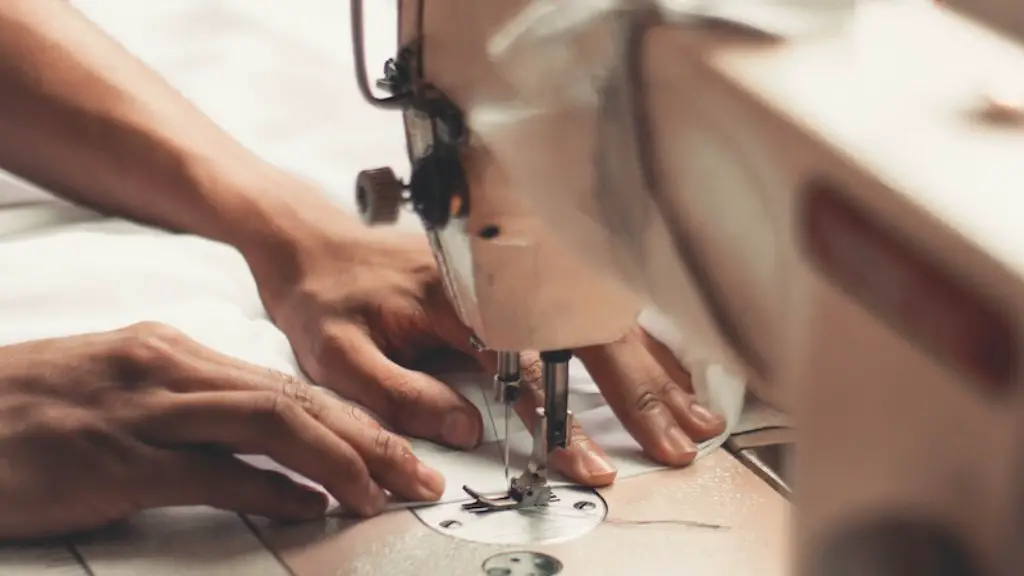Understand Your Sewing Machine
Before attempting to load a bobbin on a Singer sewing machine, it is important to understand the fundamental parts and pieces of the machine. Singer machines are equipped with a spool pin, thread spool, a presser foot, feed and tension discs. The bobbin is a small, cylindrical spool of thread located in the needle area beneath the presser foot. It is important to ensure these parts are in good working condition before attempting to load the bobbin.
Gather the Appropriate Supplies
Once the parts of the Singer sewing machine have been identified, it is time to gather the necessary supplies. Thread, a bobbin and scissors are the essential components to loading the bobbin. Ensure that the correct thread, bobbin and size needle are all compatible with the sewing machine model before loading the bobbin. It may be useful to have a seam ripper and a lint brush on hand, in case of any loose thread, snags or lint inside the machine.
Preparing the Thread
Secure the spool of thread on the spool pin, taking care to ensure the thread is wound in the correct direction. Pull the thread from the spool and pass it through the tension disc and thread guide, taking a shortcut through the hole where the bobbin is inserted. The final step is to pass the thread through the eye of the needle, and allow enough thread to lightly dangle on either side of the needle.
Insert the Bobbin
To load a bobbin on a Singer sewing machine, place it in the bobbin holder beneath the needle plate. Wind the thread around the bobbin several times before inserting the end of the thread into the bobbin holder. Pull the thread completely through the holder and pass it through the hole at the center of the bobbin.
Pull the Bobbin Thread
It is important to ensure the bobbin is securely in place before beginning to turn the wheel of the machine. As the wheel is turned counter-clockwise, the bobbin thread should start to get wound onto the bobbin. Once the wheel of the machine has been turned several times, pull the end of the bobbin thread to make sure it has been wound securely. If the thread is not winding correctly, stop the wheel and check the position of the bobbin.
Secure the Stitching Thread
Once the bobbin is loaded and the thread securely wound, it is time to secure the stitching thread. Pull the thread until it is taut, and hold it firmly against the right side of the machine. Using the left hand, turn the wheel of the machine clockwise with the right hand holding the thread. The needle will begin to move, creating a small loop of the top thread underneath the bobbin.
Finishing the Threading Process
Once the loop of top thread has been established, lift the presser foot and pull the bobbin thread upwards until it appears in the loop. Hold both threads and pull gently, taking care to ensure the loop is secure and not coming undone from the bobbin thread. Tie the threads together, or use a knot to make sure they are securely attached. The threading process is complete and the machine is ready for use.
Practice Using the Machine
Before beginning any sewing project, it may be useful to practice the process of loading a bobbin on a Singer sewing machine. Depending on the specifics of the machine, the level of difficulty may vary, but with a little bit of practice, anyone can easily learn how to thread a Singer sewing machine in no time.
Troubleshooting
If the bobbin thread is not winding correctly, or the machine is not operating properly, it may be necessary to troubleshoot the issue. Make sure the bobbin is placed correctly in the holder, and the thread is wound in the correct direction. Check the condition of the presser foot, and any tension discs, making sure all parts are in working order and functioning correctly. If the issue persists, or the problem is not easily identified, it may be time to seek the advice of a professional or repair service.
Maintaining Your Sewing Machine
In order to keep a Singer sewing machine functioning properly, it is important to maintain the machine regularly. Keep the machine clean and free of lint, and make sure all parts are properly lubricated. If any parts are worn and need to be replaced, it is important to use replacement parts that are compatible with the machine model. Proper maintenance and regular check-ups will help ensure that a Singer sewing machine is functioning and running smoothly.
Enhancing Skills
Loading a bobbin on a Singer sewing machine is an easy process, but it is important to understand the fundamentals of the machine in order to do it accurately and efficiently. Taking sewing classes or reading sewing books can help enhance basic skills and provide the necessary information for better understanding of a Singer machine. Understanding the fundamentals of the machine and its components will help to ensure a successful sewing experience.
Advanced Techniques
Once the basics of sewing have been mastered, it may be time to take advantage of some of the more advanced techniques offered by Singer machines. Specialty stitches, like zigzag and blanket stitches, can help to create beautiful and intricate designs and patterns. Differential feed settings can help to prevent fabric stretching or tunneling. Knowing how to properly use the machine can help create beautiful works of art, making a Singer machine a truly essential tool.
Conclusion of Fabric Types
In addition to understanding the various functions and components of a Singer sewing machine, it is important to understand the various types of fabric that can be used with the machine. Different fabrics will require slightly different settings and adjustments, so it is necessary to ensure that the wall setting corresponds to the fabric type. Understanding the different properties of fabric will help to ensure the desired results for any sewing project.



